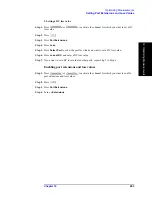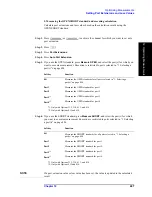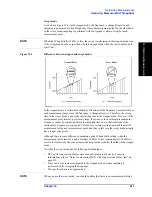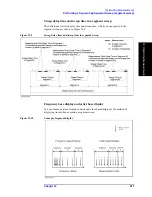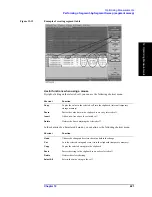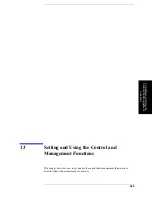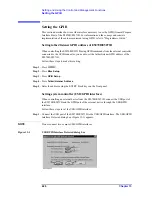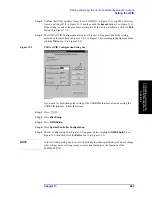
412
Chapter 12
Optimizing Measurements
Improving Measurement Throughput
problem before performing the actual measurement.
Notes for measuring DUTs with long electrical delay time
When sweeping the frequency of a signal applied to the DUT (
F
), there is a frequency
difference between the input side and output side of the DUT due to the delay time that
occurs in the DUT (
Δ
T
). This frequency difference (
Δ
F
) becomes larger as the electrical
delay time of the DUT becomes longer and the frequency sweep speed becomes faster, as
shown in the following equation.
Δ
F
t
d
dF
Δ
T
×
=
When measuring a DUT with long electrical delay time, if you perform measurement
(sampling) while sweeping the measurement signal as in the swept mode, a measurement
error occurs due to the difference between the frequency outputted from the source port
and the frequency actually measured at the receiver port. Especially for the fast swept
mode, the effect of this error becomes larger due to the faster frequency sweep speed.
Therefore, when measuring a DUT with a long electrical delay time, generally use the
stepped mode to prevent the measurement error described above. However, if you need to
shorten the sweep time, evaluate the measurement error as described below to determine
the sweep mode that should be used.
Procedure to select the fastest possible sweep mode when measuring a DUT with a
long electrical delay time
Step 1.
Perform measurement in both the stepped mode and the fast swept mode.
Step 2.
Compare the measurement results of the two modes to evaluate the measurement error
when using the fast swept mode and determine the sweep mode to use as shown below.
Degree of measurement error
Sweep mode you should use
No problem for required accuracy
Fast swept mode
Problem for
required accuracy
Only part of the
sweep range
For range with problem: Fast stepped mode
For range without problem: Fast swept mode
(use segment sweep)
Entire sweep
range
Fast stepped mode
NOTE
By changing the sweep conditions as follows, you can decrease the measurement error
when using the fast swept mode. (But these steps increase the measurement time.)
•
Narrow the IF bandwidth
•
Elongate the sweep time
Summary of Contents for E5070B
Page 6: ......
Page 30: ...24 Contents ...
Page 34: ...28 Chapter1 Precautions Before contacting us ...
Page 286: ...280 Chapter6 Data Analysis Using the Equation Editor ...
Page 430: ...424 Chapter12 Optimizing Measurements Performing a Segment by Segment Sweep segment sweep ...
Page 538: ...532 Chapter15 Measurement Examples Executing Power Calibration ...
Page 634: ...628 AppendixB Troubleshooting Warning Message ...
Page 732: ...726 AppendixD Softkey Functions Trigger Menu ...
Page 740: ...734 AppendixE General Principles of Operation Data Processing ...
Page 760: ...754 AppendixF Replacing the 8753ES with the E5070B E5071B Comparing Functions ...






